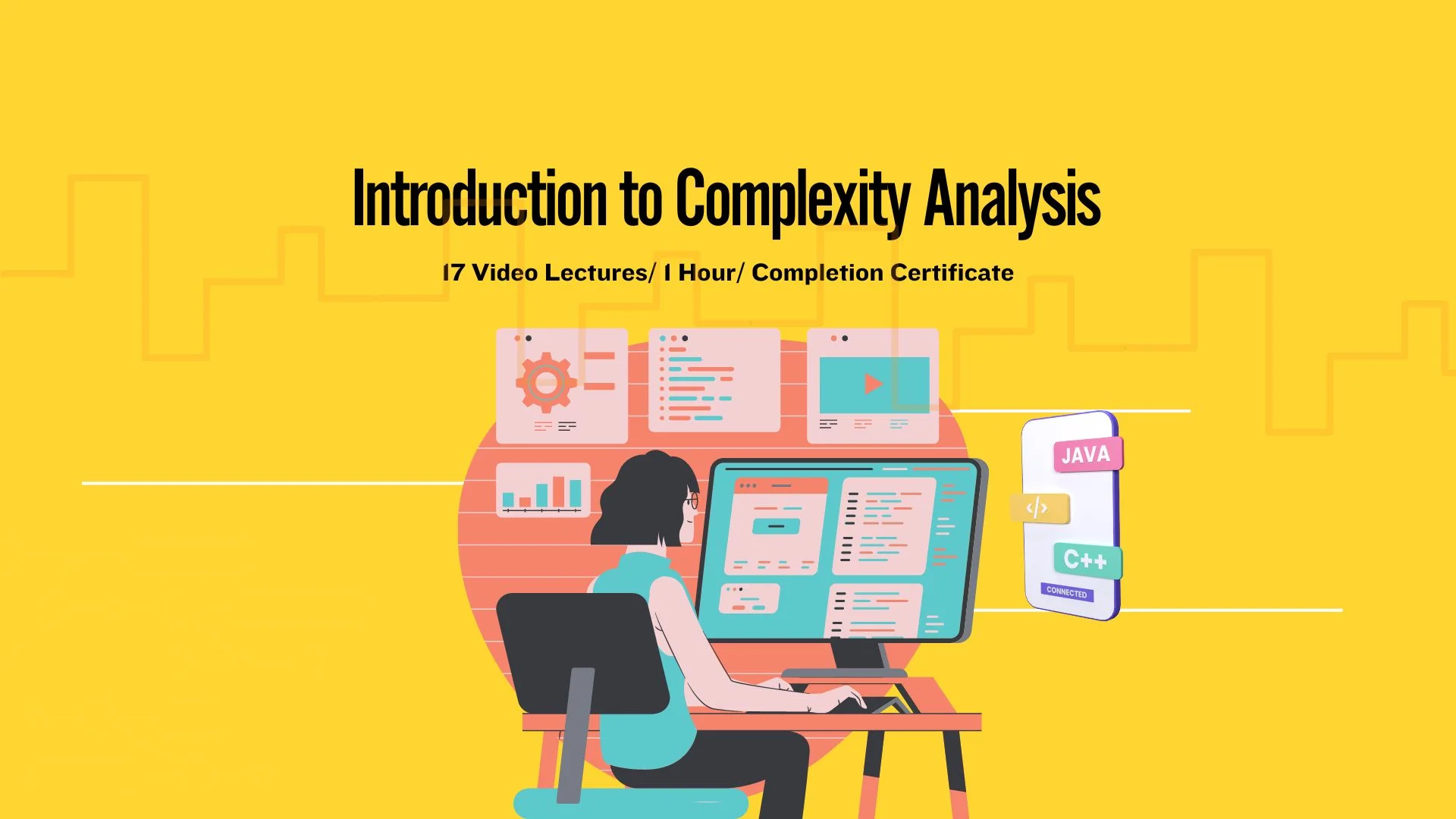Course Description
This course Introduction to Complexity Analysis provides a comprehensive understanding of the fundamental concepts and techniques used to analyze the efficiency of algorithms. Starting with an introduction to complexity analysis, the course covers the basics of time and space complexity. Students delve into various time complexities including constant, linear, quadratic, cubic, logarithmic, square root, factorial, and exponential complexities. Through practical exercises and examples, learners gain proficiency in evaluating algorithmic efficiency based on different scenarios. Additionally, the course explores space complexity, focusing on linear complexity and providing illustrative examples. Through practical exercises and real-world examples, learners gain proficiency in evaluating algorithmic efficiency based on different scenarios. They learn to identify the appropriate complexity class for various algorithms and understand the trade-offs involved in algorithm design.
Additionally, the course explores space complexity, focusing on how much memory an algorithm uses relative to the input size. Key areas include:
- Linear Space Complexity (O(n)): Understanding algorithms that require memory proportional to the input size.
- Constant Space Complexity (O(1)): Analyzing algorithms that use a fixed amount of memory regardless of input size.
Illustrative examples help students grasp these concepts, demonstrating how to balance time and space requirements to optimize algorithm performance. By the end of the course, students will have a solid foundation in algorithm complexity analysis, enabling them to analyze and optimize algorithms effectively in real-world applications. By the end of the course, students will have a solid foundation in algorithm complexity analysis, enabling them to critically evaluate and optimize algorithms effectively in real-world applications. This knowledge equips them to design efficient algorithms, make informed decisions about algorithm selection, and improve existing solutions to enhance performance and resource utilization in various computational problems.
Introduction to Complexity Analysis Course Objectives:
Grasp Complexity Basics: Understand fundamental time and space complexity concepts.
Identify Time Complexities: Recognize various time complexities like constant, linear, and exponential.
Assess Algorithm Efficiency: Evaluate algorithm performance through practical exercises.
Analyze Space Usage: Understand and analyze space complexity with examples.
Optimize Algorithms: Learn to improve and optimize algorithms for real-world applications.
Introduction to Complexity Analysis Course Requirements:
Basic programming knowledge using C/C++.
What More to Expect?
- 14 complete lessons within 1 hour of time
- Quizzes to assess learning from the course
- Option to discuss problems on the lessons through the course forum
- Certificate of achievement issued with the affiliation of HRDI and Skill Jobs
Course Features
- Lectures 17
- Quizzes 1
- Duration Lifetime access
- Skill level All levels
- Language Bengali
- Students 0
- Certificate Yes
- Assessments Self






